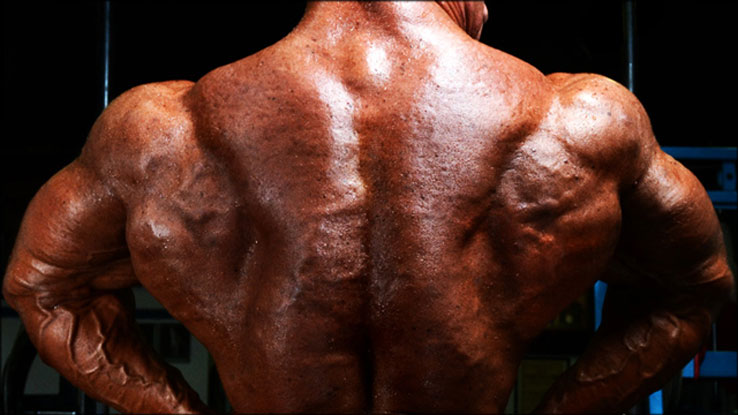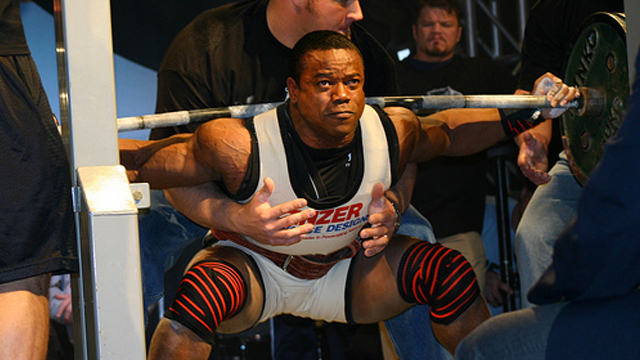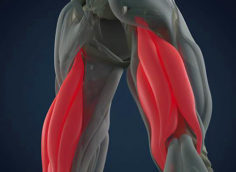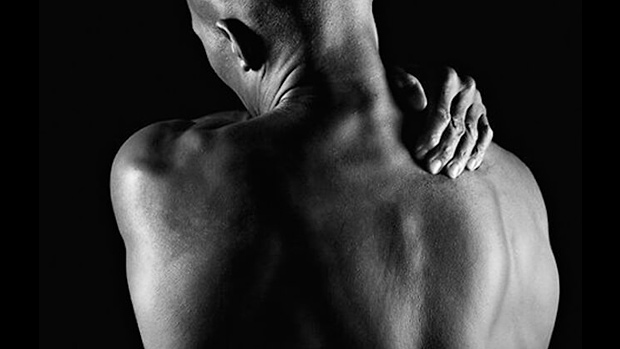"You gotta row to grow" is a favorite expression among bodybuilders and unimaginative fitness editors. While this advice might be as derivative as it gets, I don't disagree – although I'd add that there are ways to make rowing for a bigger back even better!
This article details my top 8 rowing variations. However, let me preface things by saying that I didn't invent any of the following exercises to look cool or "cutting edge." I actually use these exercises on myself and with clients and have experienced great success with them.
If you read my T Nation A Monstrous Back: The Mountain Dog Way article, you'd know my back was very difficult for me to develop. I had to get very creative and devise special techniques that would make my back grow.
This isn't fluff – it's downright brutal when performed correctly. Some of these are easier to learn than others, but I promise if you get them right, your back will respond in a big way.
There are three important factors that go into deciding whether a back exercise is worthy or not. (You won't find this type of information in a textbook – only after many years of focused, hard training and listening to your body.)
- Compression: Does the exercise allow you to forcefully squeeze the muscle against a significant load? Notice I didn't say a light load – squeezing light weight can help with your mind muscle connection and lat activation, but you have to handle significant weight to achieve the level of compression required.
- Range of motion: Does the exercise allow you to work your lats through a long range of motion? Some row variations really capture this – you almost feel like your scapulae are about to rip from your body. At the other end of the rep, the further you can get your elbows back, the more you can tap into your lats.
- Contraction: Does the exercise allow you to feel your back contract? A lat contraction is tougher to feel than say, the biceps or triceps. This also takes time and practice, but it makes a huge difference in terms of results.
Using these three factors, I evaluated my top 8 rowing movements and ranked them according to effectiveness. Here's the list, in ascending order of effectiveness:
I'm not a fan of traditional barbell rows. I know, Lee Haney and Ronnie Coleman liked them and their backs were huge. Well, their backs would've grown even if all they did was paint their toenails.
One tweak that can make a barbell row better, though, is using a cambered bar. This allows for a greater range of motion in the contracted position as your elbows can travel back much farther.
- Compression: 6 – Because the barbell is "locked" into place, you lose some compression.
- Range of motion: 8 – The camber in the bar allows for an extended range at the top. However, you can't get an extreme stretch at the bottom.
- Contraction: 6 – Not bad here. By getting your elbows up high you get a solid contraction at the top. Also, adding a few chains enhances it, as the weight is heavier in the contracted position.
Total score: 20
I like these primarily due to the stretch you can put on your entire back, especially the lower traps and rhomboids, which can also be enhanced by using bands. I have to thank my friend Smitty from the Diesel Crew for letting me steal this movement.
- Compression: 8 – Solid compression here, however, there's a bit of a letdown at the bottom of the movement.
- Range of motion: 10 – This is an excellent exercise for getting a great range of motion. You can drive your elbows back very far.
- Contraction: 8 – The contraction is good and even better with bands, but not perfect.
Note: I'm applying a penalty to this exercise because it's difficult to breathe and I feel like my head is going to pop off mid-set, so subtract 5 points.
Total score: 21
While I'm not a fan of straight barbell rows, you should see what happens when you use a trap bar. The design of the bar allows for much more lat compression due to the hand position (palms facing in). When you do it, you can feel your entire lat get crushed.
- Compression: 9 – Now we're talking. You'll know exactly what I mean by "compression" when you do these.
- Range of motion: 5 – The bar is kind of big and clunky, so you can't really get any extra special range of motion here.
- Contraction: 8 – The contraction is solid and you can use a fair amount of weight, so this scores high.
Total score: 22
I like dumbbell rows a lot, although the "squared" shoulder form most lifters use makes this an inferior exercise. But prop that hip up and you're in business. Another bonus is that you can also use the "deadstop" variation to make them more explosive.
- Compression: 7 – You can get a good compression on these just by handling heavy weight, but not quite as good as one-arm barbell rows.
- Range of motion: 10 – These are excellent for range of motion, especially if you prop the hip up.
- Contraction: 7 – Pretty solid here, but not the best.
Total score: 24
Everyone laughs at the lowly Smith machine, except the joke is on them as it can be very useful if used intelligently. A huge plus to using the Smith machine is that it allows you to row explosively.
Think about this, when you train your back, and on rows in particular, you should focus on driving your elbows up, not curling the weight up with your arms as most do. So by being locked into a fixed plane of motion, you can 100% focus on ramming your elbows up.
This is new territory for your lats. They aren't used to this kind of recruitment with any significant weight! Needless to say, I love these.
- Compression: 10 – This is the ultimate example of lat compression when rowing. In order to feel this with a regular barbell row, you'd have to go so light that the exercise wouldn't do much, unless you're a beginner.
- Range of motion: 5 – Nothing really special here, although you know what would be cool? If they made a Smith machine with a cambered bar!
- Contraction: 9 – The compression and being locked into a fixed plane of motion really allows you to flex hard at the top. Another high score here.
Total score: 24 (wins the tiebreaker over dumbbell rows because I like these better)
Ah, good ol' cable rows. The biggest problem I've had with these is finding the perfect handle. It seems as if some handles just make your shoulders and arms do all the work.
The two methods that I like the most are using two individual pulley handles and using a close-grip supinated attachment (my favorite, and featured in the video below). This attachment is great and I don't even need straps; and believe me, I'm a strap fanatic.
- Compression: 9 – Great feel here. You can feel the weight crushing your lats throughout the row, especially your lower lats.
- Range of motion: 6 – If you use the single-handle pulley attachments you can get a little better range of motion, but basically nothing special here.
- Contraction: 10 – Perfect squeeze.
Total score: 25
These rows were made famous by some weird blonde dude that likes to wear sandals with socks and train with tank tops over the top of his T-shirts. Strange, I know.
Anyway, this exercise is intense. It's a first class ball buster and is the epitome of a basic movement, even though it's not considered a basic movement. Use a T-bar or landmine, and remember to use the hip trick here too, to get a better range of motion and intense pre-stretch.
- Compression: 8 – The compression is good on these, but not as good as a one-arm barbell row as the bar can swing a bit if using the landmine apparatus.
- Range of motion: 10 – Again, get the hip up a little higher on the side you're rowing with. You can see in the video my left hip is raised a bit. Also notice how my lower lat is stretched. Perfect.
- Contraction: 8 – These will deliver an awesome pump, but the contraction isn't what I'd call a 10. Still, these will pile up mass on your lats.
Total score: 26
This is an absolutely unbelievable lat exercise. These and Meadows rows are the two rowing variations that have earned me the most "thank yous" from folks out there in training land.
You can add a Meadows row handle to this exercise and it feels even better, although I'll be damned if I can explain why. Adding a few chains puts the final touches on one absolute beast of an exercise, and you can even use a suitcase handle and they feel awesome. As you can see, there's a lot of potential with this exercise.
- Compression: 10 – You just can't get the level of compression on dumbbell rows that you can with these. When done correctly, you'll feel it from the top of your lat to the bottom.
- Range of motion: 10 – Using 25-pound plates and pulling up to your side certainly helps the range of motion, but here's the key – and it's a trick that once you do it, you'll want to throat punch yourself for not starting this years ago – raise the hip on the side you're lifting higher than the other hip.
Most people do these or dumbbell rows with "square" shoulders, so they're really missing out on the awesome pre-stretch and extra range of motion that can be had. Try this and you'll understand. - Contraction: 9 – The contraction is really good on these, and using a chain makes it even better. Still, I just can't rank this a 10 as your lats don't squeeze as hard as with the low row variation.
Total score: 29 – Winner and still champion row variation of the world.





